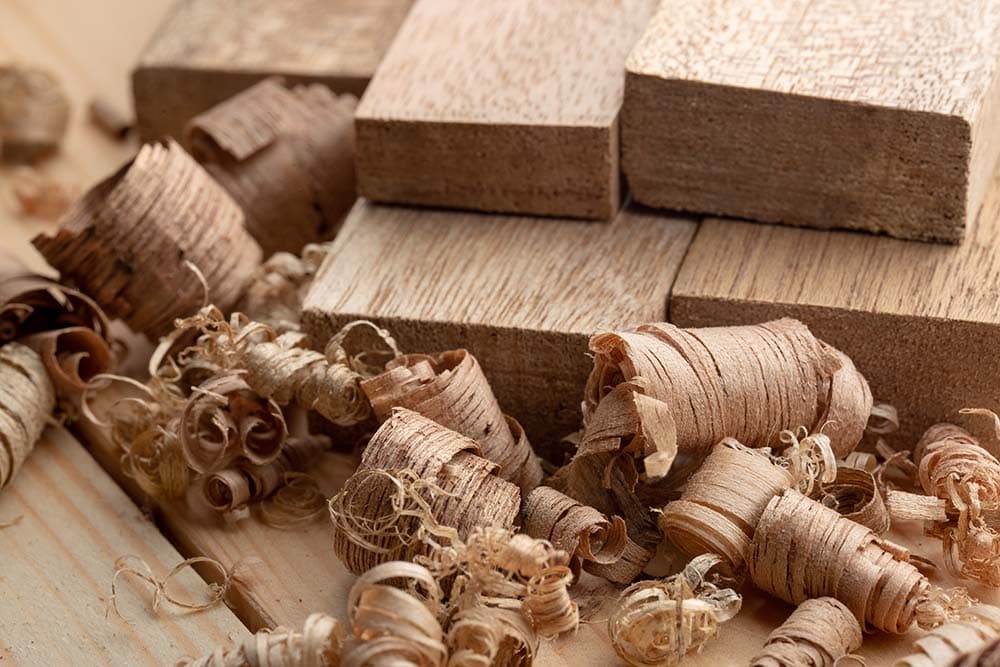10 Varieties of Mahogany Wood for Your Next Project (With Pictures)
-
Ed Malaker
- Last updated:

Mahogany is a popular variety of hardwood that is great for beginners because it is easy to work with while remaining strong enough to use for furniture and other objects. It’s easy to find and inexpensive, but since there are several varieties, many beginner woodworkers aren’t sure what kind they should get or what the differences are. Keep reading as we look at the different varieties and tell you about them so you will know what you are looking at next time you visit the hardware store.
The 10 Varieties of Mahogany Wood for Your Next Project
True Mahogany
1. African Mahogany
| Usability: | Moderate |
African mahogany can also go by the name Khaya mahogany, and it is native to the African rainforest. It has a unique grain that displays rays instead of rings. Still, the interlocking grain is coarse and heavy, so many woodworkers choose a different variety even though it’s often less expensive.
2. Big Leaf Mahogany
| Usability: | Good |
Big leaf mahogany is the variety that you will most likely find for sale in America. It’s a lightweight wood that resists rot without sacrificing strength or appearance, and it’s a good choice when you plan to paint or stain. The downside of this variety is that Brazil and Bolivia recently have been restricted from logging big leaf mahogany trees, leaving only Peru, which has already used up more than half its trees. Therefore, the usability of this variety is likely to decline as the price increases.
3. Cuban Mahogany
| Usability: | Poor |
Cuban mahogany is a Spanish variety that was extremely popular for many years with European settlers due to its dark color and resistance to rot, making it a great choice for constructing boats. However, over-harvesting wiped out entire forests of this variety, and it is currently quite rare, so it is unlikely that you will be able to choose Cuban mahogany for your next project.
4. Honduras Mahogany
| Usability: | Poor |
You will find Honduras mahogany growing in Mexico and Central America. It’s a popular variety due to its deep color, and many woodworkers like to use it for musical instruments due to its resonant properties. However, over-harvesting has caused the number of these trees to dwindle significantly, and they are now an endangered variety, so you will not likely be able to choose Honduras mahogany for your next project.
 False Mahogany
False Mahogany
5. Spanish Cedar
| Usability: | Good |
Spanish cedar is a soft wood, so it won’t have the durability that you can expect from true mahogany. However, it presents the woodworker with similar color, and it’s easy to work with, so many people like it. Spanish cedar is also resistant to termites and rotting, making it a good choice for furniture, especially if it will spend time outside.
6. Sapele
| Usability: | Good |
A fantastic alternative to mahogany is sapele, which looks, feels, and acts like true mahogany at a lower cost, making it extremely popular with woodworkers. Unfortunately, like many mahogany trees, overharvesting is taking its toll on sapele numbers. They are currently a vulnerable variety and may become harder to find.
7. Sipo
| Usability: | Good |
Sipo trees have a dark brown wood that resembles the deep red of mahogany. The wood also has small flecks that can cause it to sparkle. Woodworkers often use this variety to create musical instruments, and sipo is also a popular furniture wood.
8. Lauan
| Usability: | Good |
Lauan is a tree that you can find in the Philippines with many of the traits of mahogany. Since it looks so similar, you can find American markets labeling lauan as Philippine Mahogany, which is incorrect and deceptive.
9. East Indian Mahogany
| Usability: | Good |
East Indian mahogany is a false mahogany that provides the user with a dark-brown wood perfect for making furniture, molding, and other items that usually use mahogany. It’s also easier to find and less expensive, so ask the store clerk if they have it the next time that you visit the lumber yard.
10. Royal Mahogany
| Usability: | Good |
You might find people calling the royal mahogany a crabwood or andiroba. It provides the user with a reddish-brown wood that looks like mahogany and is just as easy to cut and shape. It’s extremely durable, and you can even use it for flooring, making it one of the more versatile false mahoganies.
Are There Other Substitutes for Mahogany?
Cherry wood is an excellent substitute for mahogany, especially in America, where it grows natively. It’s a little harder to cut and shape because cherry is a harder wood, but that also makes it more durable, giving your projects a longer shelf life.
Conclusion
While mahogany, especially big leaf mahogany, has been a popular choice for beginner and experienced woodworkers for hundreds of years, over-harvesting has reduced every variety of mahogany trees to dangerously low numbers. Wood from these trees is becoming harder to find and much more expensive, so you may need to select one of the false mahoganies, like East Indian or royal mahogany. When selecting wood for your next project, you can also try cherry, which is similar and grows natively in the United States.
- See Also: Which Fruits Are Best For Juicing?
Featured Image Credit: Yura Borson, Shutterstock
Contents

 False Mahogany
False Mahogany